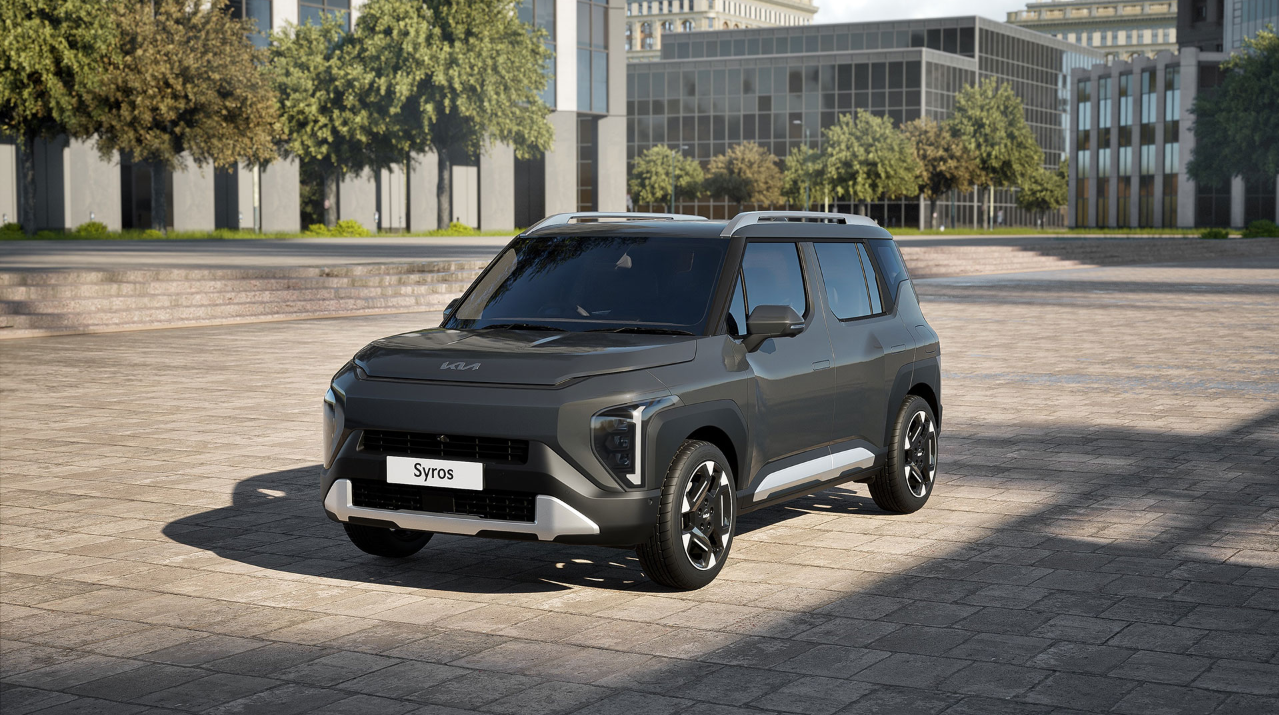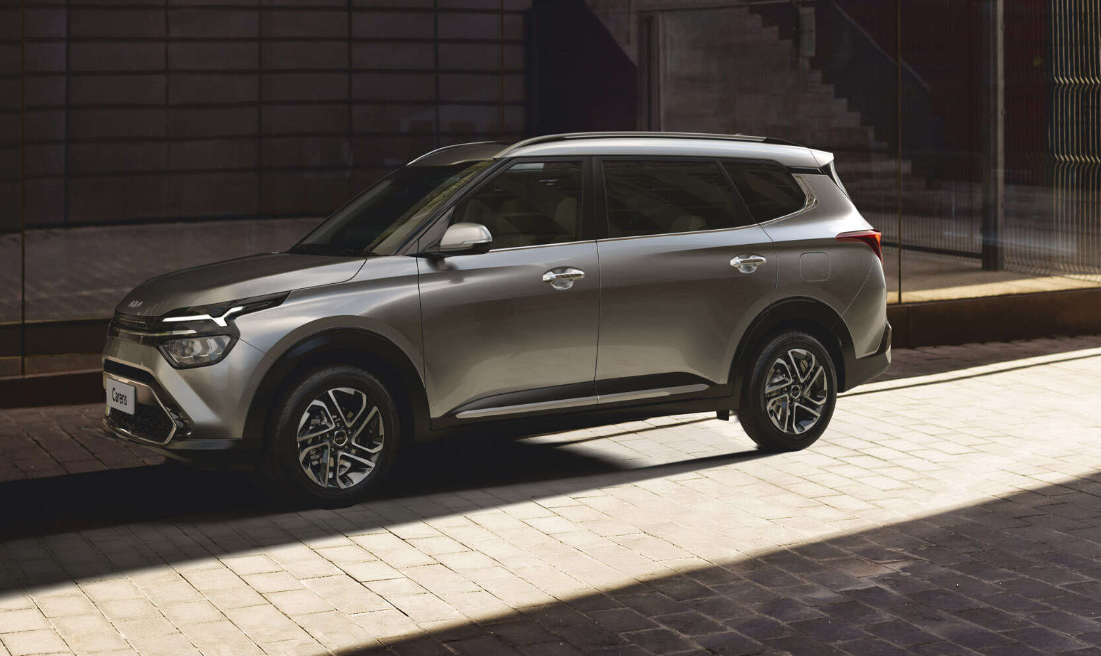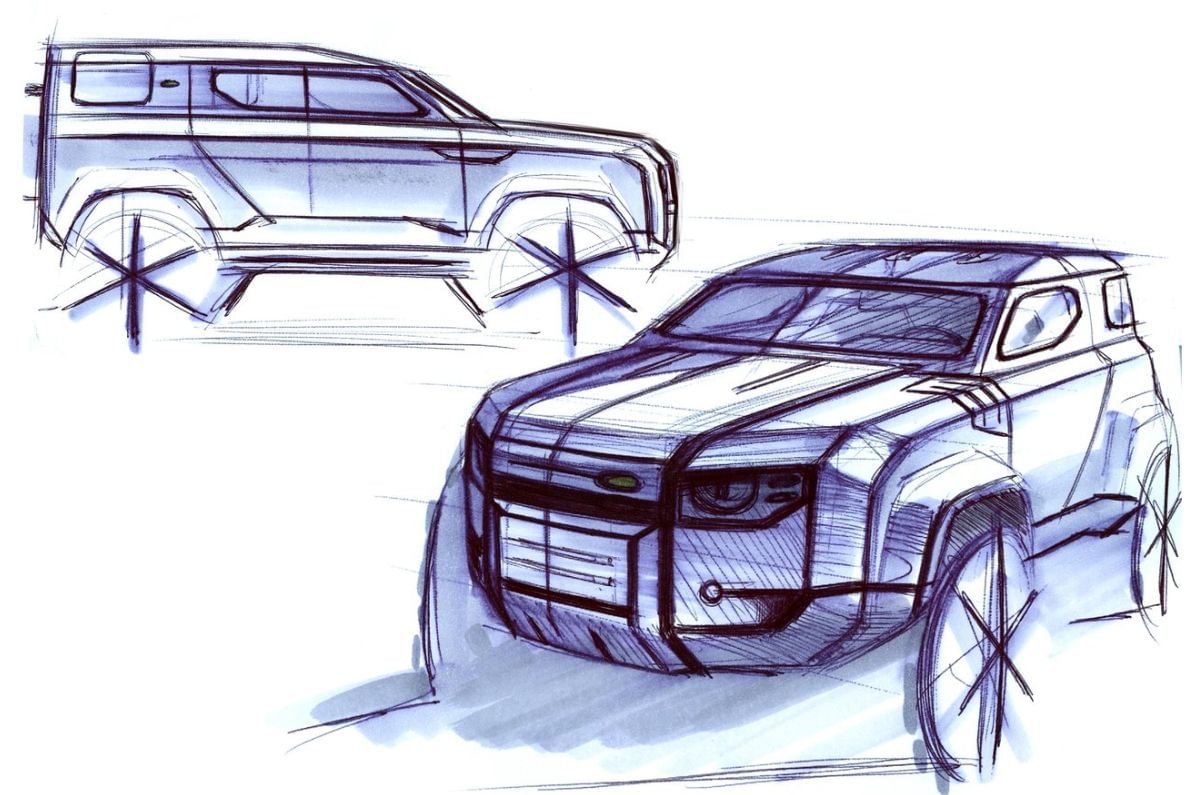 Kia syros ev
Kia syros evIndia will play a key role in increasing Kia Corporation’s output of electric and hybrid electric vehicles by the end of this decade. The other countries identified for this initiative are the US, Europe and South Korea.
Kia, part of the Hyundai Motor Grouphas targeted global sales of 4.19 million vehicles in 2030, of which EVs (electric vehicles) will account for 1.26 million units and HEVs (hybrid electric vehicles) for 1.07 million units.
The tally of 2.33 million units means that these two categories will take up nearly 56 per cent of its portfolio in 2030 with ICE (internal combustion engine) accounting for the balance 44 per cent with 1.86 million units.
In India, Kia’s share of EVs and HEVs by the end of this decade is estimated to be 43 per cent of an overall sales target of 400,000 units that will be ‘centered on’ the newly launched Syros. This means that the next five years will see a rapid buildup of the EV and HEV portfolio which right now is little to write home about.
Carens, Syrians to lead India charge
‘In India, where EV sales are set to begin in earnest this year, we will focus on the Carens EV and Syros EV, with a goal of reaching 18 per cent EV mix by 2030,’ said the company’s top management at the recent Kia CEO Investor Day in South Korea. The message is loud and clear: Kia aims to be a force to reckon with in EVs and HEVs in India by the end of the decade and take on rivals like Tata Motors, Mahindra & Mahindra, JSW MG Motor, Hyundai etc.
Additionally, the Korean carmaker will expand its global HEV sales from 490,000 units in 2025 to 990,000 units by 2030. In Europe and Korea, the HEV mix will be maintained at current levels, whereas in North America and India, Kia targets increasing it to 39 per cent and 25 per cent respectively.
To support HEV sales growth, Kia plans to expand its powertrain supply capacity. By the end of 2025, it aims to secure 680,00 units of annual production capacity, and in the long term, expand HEV supply to 990,000 units to ‘flexibly respond’ to rising demand as market preferences change. ‘We will also broaden our HEV portfolio across small, medium, and large segments to better meet diverse customer needs,’ said the management.

Bullish on India
According to Kia, India’s industry demand is expected to continue rising, driven by strong economic growth. EV demand is also tipped to grow in response to tightening environmental regulations.
‘Kia aims to establish a 400,000-unit sales system by 2030 through the launch of various new models. At the same time, we will strengthen our innovative brand image by offering high-tech features to capture the next generation of customers,’ said the management at the investor meet.
The company believes that a growing number of highly educated and high-income consumers with strong purchasing power are joining the brand. The proportion of Gen Y and Z customers, its key future target segment, is also increasing and, thereby, ‘expanding a vital consumer base’ for long-term growth.
The overall global target of 4.19 million units set by Kia for 2030 marks an increase of 970,000 units from the 2025 goal of 3.22 million units where market share is expected to expand from the present level of 3.7 per centto 4.5 per cent in 2030.
Downward revision
‘This is a downward revision of 110,000 units from the previously announced 2030 target of 4.3 million units, reflecting a more realistic outlook for the Chinese market,’ said the management. This is perhaps based on the fact that Chinese EVs are making rapid strides both in their domestic market and overseas regions. Leading the charge is the relentless BYD which has emerged the latest favourite ahead of Tesla.
For sales in developed markets including North America, Europe, and Korea, Kia is looking at an overall tally of 2.46 million units or 59 per cent of total sales. In emerging markets, the idea is to sell 1.73 million units across India, the Middle East, and Asia-Pacific.
As part of its response to ‘declining ICE demand’, Kia will expand HEV sales while continuing to grow EV sales to drive electrification. In its four key markets, it plans to increase the EV mix by 2030 to 70 per cent in North America, 86 per cent in Europe, 73 per cent in Korea and 43 per cent in India.
‘We will continue offering ICE models in the short to mid-term to meet residual demand in emerging markets, while expanding and diversifying our HEV lineup from Seltos to Telluride,’ said the Kia management. For EVs, it will grow its volume lineup starting with EV3, EV4 and EV5, extending to EV2, to bridge the EV chasm and help the cause of mass electrification.
New mobility opportunities
Starting with PV5 this year, Kia will continue expanding its PBV (purpose built vehicle) lineup to create new mobility business opportunities, including entry into the pickup segment to strengthen its competitive edge.
The carmaker will also strengthen its global supply chain which will see an additional 200,000 units of production capacity in Korea with a new PBV-dedicated plant. Overseas, it will leverage existing plants in key regions to ensure timely supply and address demand shifts.
Kia eventually plans to raise its global EV market share from 2.3 per cent in 2025 to 4.3 per cent by 2030, reinforcing ‘our EV leadership and market position’. It will continue to expand the lineup with the EV4, EV5, and EV2, building a robust volume EV portfolio.
Kia also plans to ‘enhance price competitiveness’ by innovating EV cost structure. As part of this drive, it will ‘optimise hardware’ by focusing on interior and exterior design that deliver meaningful value to customers.
Enhancing software capabilities
‘Alongside this, we will standardise EV software by applying next-gen E/E architecture and advancing vehicle software capabilities.
Furthermore, we plan to develop next-generation batteries that improve both cost efficiency and product competitiveness,’ elaborated the management.
Beyond this, Kia will expand EV-dedicated service centres and strengthen the capabilities of its technicians. Remote diagnostic services will also be offered to ‘maximise customer convenience’.
According to Kia, global automotive demand in 2025 is projected to grow just 0.3 per cent reaching 84.6 million units and, thereby, indicating a slowdown. The Korean market is expected to see slight growth driven by the low base effect despite weakened consumer sentiment from economic slowdown.
The US market in 2025 is projected to achieve moderate growth, supported by solid consumer spending and a robust job market. Europe is likely to face growth constraints due to stricter emissions regulations, while India is expected to maintain its growth momentum on the back of strong economic fundamentals and improving consumer sentiment.
India in 2025
‘In India, we aim to achieve 300,000 units in retail sales and a 6.9 per cent market share, through the launch of Syros and the facelift model of Carens. To reach 300,000 units in domestic sales, we will strengthen the network by securing new dealers, rebuild the training system to improve dealer capabilities and enhance service,’ said the management while referring to the road ahead in 2025.
China is projected to remain on a low-growth trajectory, despite government support and intensified promotional efforts by automakers. Despite these challenging conditions, Kia has set its 2025 targets at 3.22 million units in wholesale, 3.17 million units in retail, and a 3.7 per cent global market share.
‘We will respond flexibly to rapidly changing market dynamics and take the lead in the popularisation of EVs. In addition, we will diversify our growth drivers to ensure the successful achievement of our business goals,’ said the management.

























































